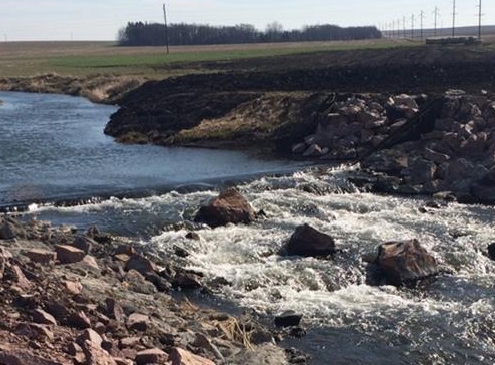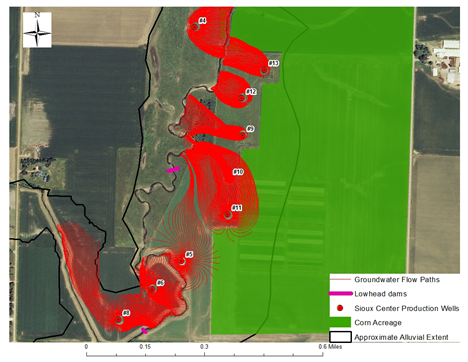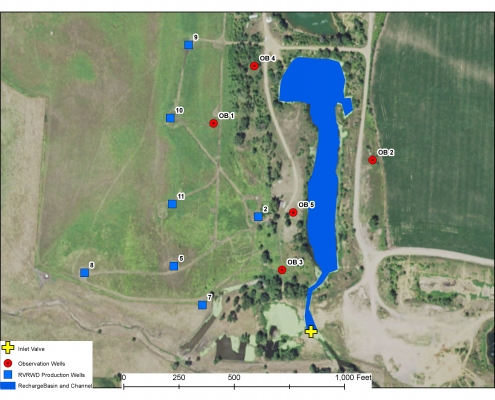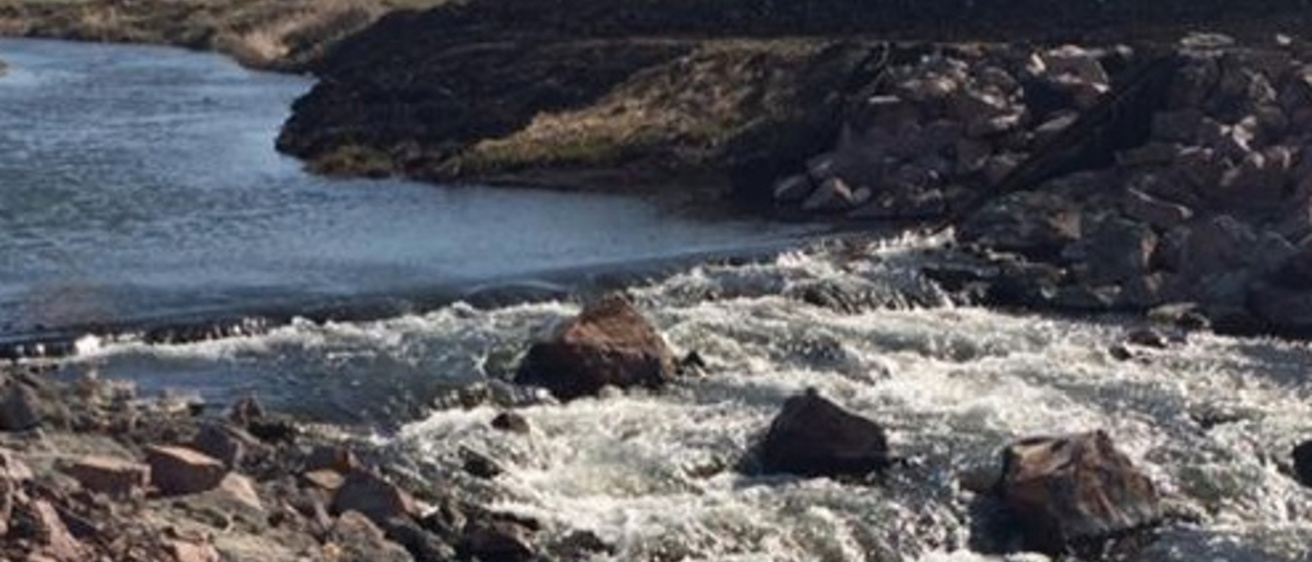Iowa Geological Survey hydrologists can help water users cope with the intensifying flood-to-drought cycle by enhancing groundwater storage.
Water managers can achieve increases in groundwater recharge and storage through changes to infrastructure — often a combination of strategies, including recharge basins, wetland construction, and low-head dams on rivers and streams. Water captured behind these structures provides both surface water and groundwater storage. The Iowa Geological Survey (IGS) has developed detailed groundwater models that can be used to evaluate various drought strategies and identify nitrate sources and remedial alternatives.
Projects
Sioux Center Drought and Nitrate Assessment

Sponsor: The City of Sioux Center
Background: Sioux Center obtains much of its public water supply from nine alluvial wells along the West Floyd River. These wells were inoperable during much the 2012 drought because of extremely low groundwater levels. In addition to water-quantity concerns, two of the alluvial wells had high nitrate concentrations above 10 ppm.
Goal: To increase groundwater recharge and storage through changes to infrastructure
IGS Strategies: One potential drought strategy for the Sioux Center wellfield was to install a low head dam or rock riffle in the West Floyd River immediately downstream of the wells to raise both the river stage and the shallow groundwater.
IGS Services: Sioux Center Wellfield

IGS scientists conducted a comprehensive hydrogeologic assessment that involved geophysics, nine pump tests, and numerous river stage and streamflow measurements. They used this data to develop a detailed groundwater flow model, which they used to predict future benefits of the rock riffle and evaluate the sources of nitrate impacting the two of the production wells.
Model results showing groundwater flowlines beneath both the prairie and corn acreage in the Sioux Center wellfield. This reduced the number of conservation acres required to improve the nitrate concentrations in Sioux Center’s water supply.
Rock Valley Rural Water Assessment

Sponsor: Rock Valley Rural Water (RVRW) in northwest Iowa
Background: Rock Valley Rural Water (RVRW) obtains all of its public water supply from eight alluvial wells located near the Big Sioux River in far western Sioux County. These shallow wells were unable to operate much of the time during the 2012 drought because of extremely low groundwater levels.
Goal: Enhance groundwater storage to provide water for Rock Valley Rural Water during droughts.
IGS Strategies: One potential strategy was to convert a nearby former sand and gravel quarry into a recharge basin.
IGS Services: The IGS conducted a comprehensive hydrogeologic assessment that involved geophysics, five pump tests, and the collection of both groundwater and surface water measurements. Staff used this data to develop a detailed groundwater flow model, which could predict future benefits of the proposed recharge basin.
Contact Us

Greg Brennan
Hydrogeologist
Groundwater Modeling and Water Resources Management
104 OIGS
greg-brennan@uiowa.edu
319-335-4465
